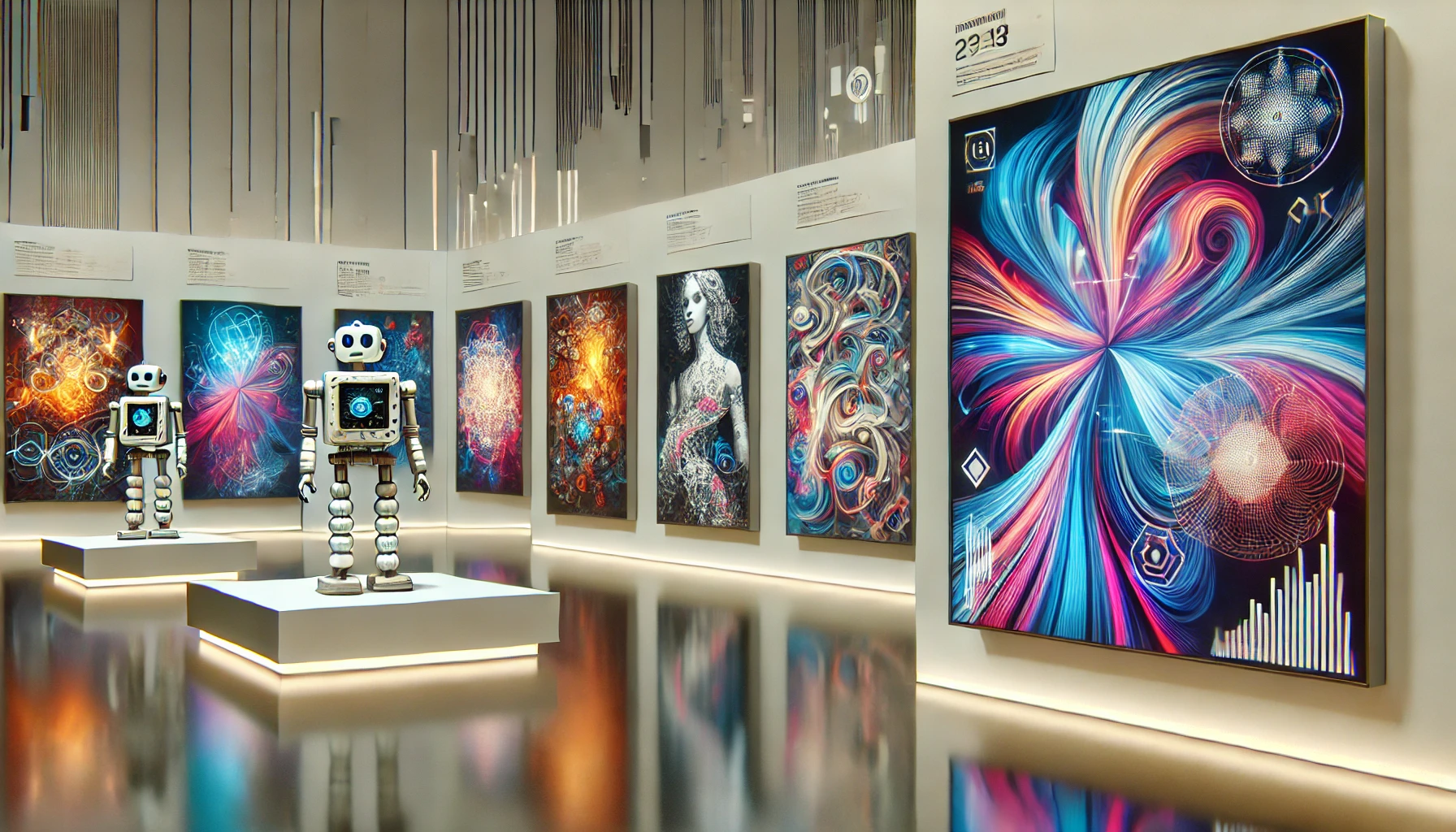AI Art: Unveiling the True Nature of Machine-Created Masterpieces
Published on 17 December 2024 by Ryan Ahmad
The emergence of AI-generated art has ignited a fervent debate within the creative community, as artists grapple with the implications of machine learning on their craft. As tools like MidJourney and Stable Diffusion redefine artistic boundaries, the question arises: Can a machine truly create art, or does it merely mimic human creativity? This dialogue, rich with ethical and philosophical nuances, reflects broader societal concerns about authorship, originality, and the future of artistic expression.

The Nature of AI Art: Creation or Imitation?
At the core of the controversy is a fundamental question about the nature of creativity itself. Traditional artists argue that AI-generated works are derivative, constructed from vast datasets that include their own creations—often without consent. Critics assert that while AI can produce visually stunning images, it lacks the emotional depth and intent that characterize human artistry.
For instance, when an AI generates an image inspired by Van Gogh, it does not recreate Starry Night but rather synthesizes elements learned from countless artworks. This process raises uncomfortable questions about originality and ownership in a field where personal expression is paramount.The distinction between creation and imitation becomes even murkier when considering how AI interprets artistic styles.
Many artists express concern that their unique voices are being diluted by algorithms that replicate their techniques at scale. The rapidity with which AI can produce art—often in mere seconds—threatens to undermine the value of painstakingly crafted human works. As one artist lamented, “AI art negates all the time and effort artists put into their work”

The Ethical Quandaries of AI Generated Art
The ethical implications of AI art extend beyond mere imitation to encompass issues of consent and copyright. Most AI models are trained on publicly available content, leading to accusations of theft from artists whose works have been used without permission. This raises critical questions about how we define ownership in an age where digital content is ubiquitous and easily accessible.
The absence of clear legal protections for AI-generated art further complicates matters; artists often find themselves powerless against unauthorized reproductions of their styles.
Moreover, the phenomenon of AI-generated pieces unintentionally mimicking artist signatures or watermarks adds another layer of complexity. As these systems learn from vast datasets, they may incorporate elements that mislead audiences into believing that an AI-generated piece is a direct copy or homage to a specific artist’s work. This not only fuels distrust but also highlights the limitations inherent in machine learning technologies.

AI Beats Out Human Artists at Art Competition. Jason Allen’s AI-generated artwork won a fair’s top prize, setting the Internet ablaze with criticism from enraged artists. [source: hyperallegic.com]
Economic Implications: A Threat to Livelihoods?
As corporations increasingly turn to AI for cost-effective solutions in fields like advertising and illustration, many artists fear for their livelihoods. The situation is exacerbated by instances where AI-generated works have outperformed human creations in competitions, prompting outrage among traditional artists who view such victories as undermining their craft.
The concern is not unfounded; if businesses prioritize speed and cost over artistic integrity, the future of human creativity could be jeopardized.However, some artists are beginning to embrace AI as a tool rather than a competitor. By integrating AI into their workflows, they can explore new creative avenues and enhance their artistic processes. This perspective suggests a potential for collaboration between human ingenuity and machine efficiency—an evolution rather than a replacement.

Navigating the Future: Collaboration or Conflict?
The historical context of technological advancements in art reveals a pattern: each new tool—from photography to digital editing—has faced skepticism before being integrated into mainstream practices. Similarly, AI tools may eventually find acceptance within the artistic community if ethical guidelines and transparency are established. Advocates call for regulations that ensure artists retain control over how their work is used in training datasets, emphasizing the need for consent and fair compensation
As we navigate this uncharted territory, it is essential for artists, technologists, and policymakers to engage in open dialogues about the implications of AI on creativity. While resistance to change is natural, embracing technology responsibly offers opportunities for growth and innovation within the arts.

The Enduring Value of Human Creativity
Despite the impressive capabilities of AI-generated art, its outputs fundamentally lack the emotional resonance that defines true artistry. Art is not merely about aesthetics; it embodies stories, experiences, and cultural contexts that machines cannot replicate. Thus, while AI may augment creative processes, it cannot replace the human element intrinsic to artistic expression.
The discourse surrounding AI art challenges us to reconsider our definitions of creativity and authorship in an increasingly digital world. As we confront these dilemmas head-on, we must strive to protect the integrity of human artistry while exploring how technology can enrich our creative landscapes. Ultimately, the value of art lies not solely in its visual appeal but in its ability to forge connections between creator and audience—a connection that remains uniquely human
Access our complete library of published content through the Noizu Asia Content Directory.
Disclaimer: This article has been created with the assistance of OpenAI’s ChatGPT, an AI language model. While the AI played a role in refining language, improving clarity, and structuring the content, the primary ideas, insights, and analysis are entirely the writer’s product. The writer’s input, research, and perspectives form the foundation of the content, with AI support used exclusively to enhance readability and flow. It’s important to note that while AI can assist in refining, the writer’s expertise and original thought guide the content’s direction. This collaborative effort aims to offer valuable insights while ensuring transparency about the role of AI in the writing process. Read our Artificial Intelligence (AI) Policy.

Ryan Ahmad
A fun-loving wordsmith with a passion for crafting stories that entertain, inspire, and spark curiosity. From quirky observations to creative musings, bringing words to life with a playful twist.
“Life’s too short for bad coffee, boring stories, and staying in one place!”















